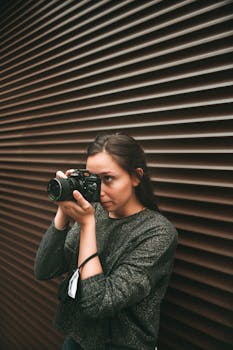
Photography is an art that allows you to showcase beautiful moments and tell stories through images. However, capturing great photographs requires more than just a good camera; it also requires an understanding of the technical aspects involved. In this article, we will discuss one of the key concepts in photography: exposure and aperture. Understanding ExposureExposure is the term used to describe the amount of light that enters the camera and reaches the image sensor. This determines how bright or dark a photograph will be. It is affected by three main factors: aperture, shutter speed, and ISO.Aperture refers to the size of the opening in the camera lens that allows light to enter. It is measured in f-stops, indicated by the “f/” symbol. A smaller f-stop (e.g., f/2.8) means a larger aperture opening, allowing more light to enter the camera. Conversely, a larger f-stop (e.g., f/22) means a smaller aperture opening, resulting in less light entering the camera.

A wider aperture (smaller f-stop number) is useful when you want to create a shallow depth of field, with a blurred background and sharp foreground. This is ideal for portraits, where you want the main subject to stand out from the background. A smaller aperture (larger f-stop number) is necessary when you want to create a deep depth of field, where both the foreground and background are in focus. This is useful in landscapes, architecture, and other scenarios where you want to show a lot of detail. Shutter speed refers to the amount of time the camera’s shutter remains open, allowing light to hit the image sensor. It is measured in seconds or fractions of a second, such as 1/200 or 2″. A faster shutter speed (e.g., 1/1000) means less light can enter the camera, resulting in a darker image. Conversely, a slower shutter speed (e.g., 1″) means more light can enter the camera, resulting in a brighter image. A faster shutter speed is useful in freezing action, such as in sports or wildlife photography, to capture sharp, clear images. A slower shutter speed is useful in creating motion blur, such as in waterfall photography, to show the movement of the water. ISO refers to the sensitivity of the camera’s image sensor to light. The higher the ISO, the more sensitive the sensor is to light, resulting in brighter photos. However, the downside of increasing the ISO is that it also increases the amount of digital noise (grain) in the image. Understanding Aperture

Aperture plays a crucial role in controlling the depth of field and exposure of an image, as explained above. It is also important to understand the effect of aperture on the image’s sharpness. When using a wide aperture (small f-stop number), only a small part of the image will be in focus, while the rest of the image will be blurred. This is called bokeh, a term used to describe the aesthetic quality of the blurred background. On the other hand, using a smaller aperture (large f-stop number) will result in the entire image being in focus, resulting in a sharper image. ConclusionUnderstanding exposure and aperture is essential for capturing great photographs. By adjusting these settings, you can create stunning photos that tell a story and evoke emotions. Knowing how to control exposure, depth of field, and sharpness will take your photography to the next level. Experiment with different settings, and don’t be afraid to make mistakes. The more you practice, the better you will become!
 see all posts!
see all posts!







